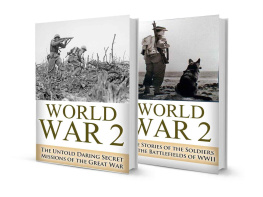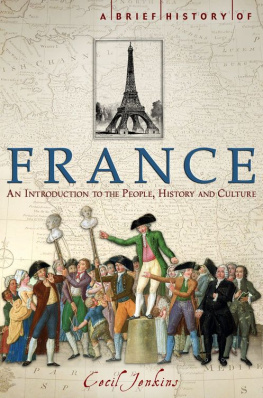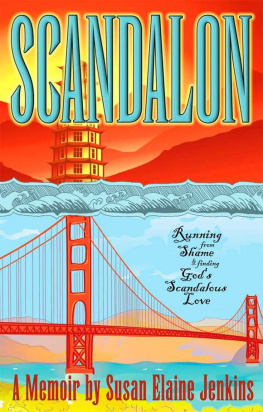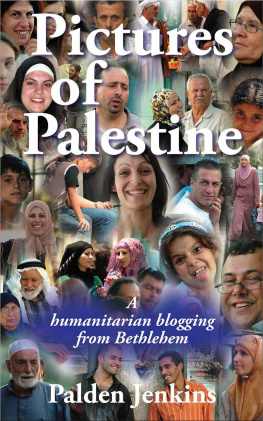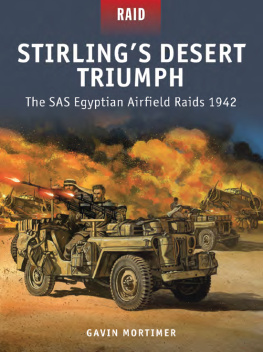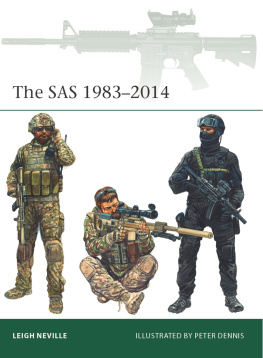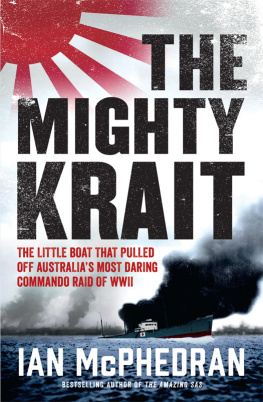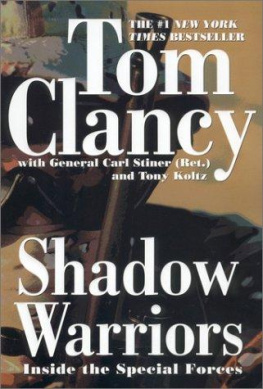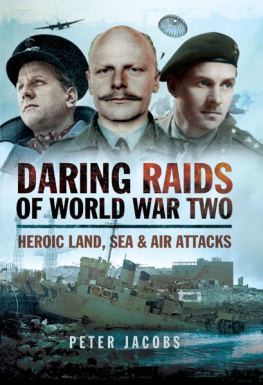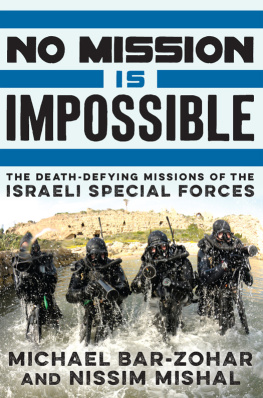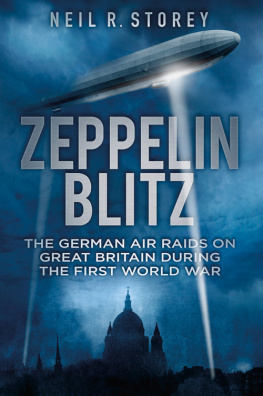Thank you for downloading this book, Raids of WWII.
In the last ten years, it sometimes seems as if raids and operations by Special Forces units of all kinds from various nations are in the news almost every day. From the invasion of Afghanistan in 2002 to the Bin Laden raid in 2011, the French in Mali in 2013, and Russian Special Forces in the Crimea in 2014, Special Forces are active all over the world. Books are written by and about them, video games allow couch potatoes to be them, and even reality TV has sometimes featured them. They are today's heroes, in much the same way that fighter pilots were in the First World War.
It was not always that way. While there have always been elite groups of soldiers, from the Spartans to the Knights Templar and the French Foreign Legion of the mid-1800s (to today), the idea of a secretive, stealthy, heavily armed unit designed for especially difficult or serious raids is relatively new.
Until the Vietnam War, and the ascension of the Green Berets of the US Army to fame, most special operations units were known by the catch-all name commandos, and it is with this term that we will begin this book.
Please feel free to share this book with your friends and family. Please also take the time to write a short review on Amazon to share your thoughts.
Chapter 1: Origins
The Commandos were made famous during WWII, but the original commandos weren't British at all. As a matter of fact, they fought against the British in the Boer Wars in South Africa in the late 19 th and early 20 th centuries. These irregular soldiers so impressed one of their enemies, whom they took prisoner (he escaped, famously), that he later used the Afrikaner word kommando to describe the special forces units he was in the process of developing. His name was Winston Churchill. He fought against the kommandos in South Africa, and they gained his respect.
The Boers (as the Dutch South Africans were known), were mostly a rural farming and ranching people who depended on their horses and rifles both to feed and defend themselves. In the South Africa of the 1800s, three groups were fighting for control: the British, the Dutch South Africans, and the Zulus. The Zulus had been defeated for the most part by the 1890s, and the British, who had mostly resided in the coastal areas of South Africa, began to grow interested in the interior, both for its resources and as a transit route to its other colonies in Africa. The Boers, who had already been pushed by the British into the African interior in the 1700s, were not about to leave again. This is the root of the Boer Wars.
The Boers were outnumbered in both men and weapons, so they fought in the manner which best suited them and their situation wherever possible launching raids on superior British forces from horseback, inflicting as much damage as they could in a short time, and then beating a hasty retreat to fight another day. Frustrating, damaging and demoralizing, these raids played a large part in the first and second Boer Wars, and contributed to the negotiated peace which resulted in the Union of South Africa, a British/Boer power sharing nation.
When WWI broke out in 1914, the First Lord of the British Admiralty was Winston Churchill, and though he pushed for the formation of special commando type forces, his position as the head of the Navy made it difficult for him to push his ideas on the army chiefs, many of whom had never really liked him.
It was the Germans who developed a sort of special operations unit during WWI. Though the Nazi SA and SS were called stormtroopers in the 1930s and 40s, the original stormtroopers were German army units who had undergone intensive training on assaulting and infiltrating enemy trenches during WWI. Known in German as sturmtruppen or Stosstruppen (shock troops), these units were the first to use sub-machine guns in combat. They were often armed with flamethrowers, brass knuckles, trench clubs, and even armor. They constantly practiced assaulting enemy trenches, and though they had their first use in 1915, it wasn't until 1918 that they made their full impact.
In the German spring offensives of 1918, which were designed to break through the British and French lines and seize Paris before the Americans could arrive in force, storm-troops spearheaded the attack, and were largely successful. That is, they allowed the German assaults to move through, but in a number of areas, the storm-troops raided British, French, and American stores, and, because German supplies had been so low for so long, many of them stuffed themselves sick and drank themselves blind.
However, the Germans had, in both 1918 and earlier, impressed and frightened the Allies so much that they began to train special assault squads too, especially the British and Italians (who were fighting the Austrians in the tough terrain of the Alps). Before these troops could be really effective, the war came to an end, and to a large degree, so did the storm-troop idea.
The storm-troops had specialized weapons, practiced infiltration and intense close quarter assault techniques, and worked as a unit. However, there were large differences between the WWI storm-troops/assault troops and the commandos of WWII. One of the most important differences was this: the commandos generally worked far behind the lines (at least that was the initial intent), and were much more autonomous in structure and ability. The stormtroopers worked in close concert with the bulk of the attacking forces.
The storm-troop idea, though the military establishment in Britain, France, and other countries left it behind at the end of the war, was an idea that continued to resonate with younger officers and career NCOs in most Western European countries. The storm-troops of the United States military were the Marines, always considered to be the first in, and the last out, of battle. It was not until after England had developed the Commandos that the United States began to develop equivalent units.
Chapter 2: The Commandos
After the Germans had taken control of the European continent and England was the only Allied nation left free, a number of problems presented themselves:
The English Army was nowhere near strong enough to face the Germans in sustained offensive action.
Command of the air over Europe (much less England itself), which would be needed to protect sustained action against the enemy, was tenuous at best, even in the coastal areas opposite England.
British morale was in bad need of a lift, and any defeat sustained at a time when it seemed Germany was unstoppable would surely have an even greater negative effect on British morale.
Given this situation, what could the British do? In 1940, the British were in the same position that the Boers of 1900 were in: they were outnumbered and outgunned by a superior foe. Winston Churchill had seen what the Boer kommandos could do, and now he proposed to do the same as they had against him.
In April 1940, during the Norwegian campaign, a call went out to members of the British reserves, the Territorial Army, to join Independent Companies within their own divisions for actions in Norway that today would best be described as guerrilla warfare. Before these units could be fully formed, the campaign in Norway came to an end.
In June, after the evacuation from Dunkirk, Churchill and the British High Command realized that for the time being, it would only be possible for them to stage the most limited kinds of action against the Germans. One of the major problems facing the British army at the time was the lack of infantry weapons of every sort. Most of the men who had made it off of the Dunkirk beaches did so without any weapons at all sometimes without any uniform at all. An army could have all the men in the world, but if it had no weapons for them, numbers did not matter.

